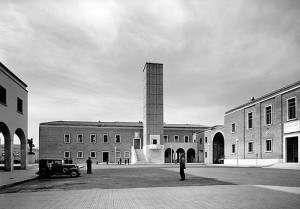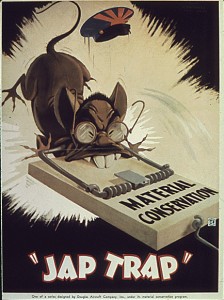The economic collapse in 1928 left the United States close to ruin. Jobs didn’t come easily, and when they did, workers often found themselves over worked, under paid, and without viable options for social and economic upward mobility. The same can be said for Nazi Germany. Suffering both from the crushing debt accumulated after the First World War and the global effects of the American economic collapse, the German people found themselves in a similar situation to the Americans. A liberal approach to economic stimulation (fair competition among corporations) where the free market would take control and hopefully ‘right the ship’ of both floundering countries did not suit Hitler or Roosevelt. Instead, both men funneled government money, time, and resources into major infrastructure building programs. Schivelbusch highlights two of these programs: the Tennessee Valley Authority in the United States, and The Autobhan in Germany. Both of these programs brought significant economic stimulation in terms of job creation, infrastructure development, and efficient land usage. They also instilled national pride.
President Roosevelt created the Tennessee Valley Authority in 1933 with the aim to redevelop 39,000 square miles of land that boasted an average median per capita income 50% lower than the national average. ((Schivelbusch, Wolfgang. “Public Works” in Three New Deals, 153-154 New York: Picador, 2006.)) The government, in effect, took control of the rivers, dams, and other infrastructure created in the area, which it in turn re-developed into lakes, rivers, and usable waterways for “commerce that now nourish their business enterprises.” ((Schivelbusch, “Public Works”, 159.)). Doesn’t sound like a terrible deal. A poor, decrepit area gets a government funded revitalization which puts millions to work building dams and creating man-made lakes. The bigger point, however, which Schivelbusch points out, is that it showed Democracy’s ability to “surpass totalitarianism’s achievements in the realm of planning.” ((Schivelbusch, “Public Works”, 162)). This flex of “democratic muscle” created a greater sense of national pride, which contributed to the rising morale of the American people as a whole in the post depression era.
The German Autobahn provided a “symbolic salvation” ((Schivelbusch, “Public Works”, 169)) for the National Socialist party. As Schivelbusch points out, much like Roosevelt, Hitler put the reputation and legitimacy of his regime in a grandiose project meant to revitalize both the economy and national pride of his people. What some might call a major flaw in Hitler’s plan, however, arguably made his achievement greater. Hitler ordered the construction of the Autobahn in 1933, a year in which the automobile existed as more of a novelty to the German people rather than an every day convenience (or perhaps a hassle) as it did to the Americans. Despite this, the creation of the Autobahn, much like the revitalization of the Tennessee Valley, prompted an economic boom- in 1938, the Volkswagen came into being. Hitler’s Autobahn, which could be seen as a highway to nowhere, ended up stimulating the German automotive industry; to paraphrase a voice heard in a cornfield in Iowa, “since he built it, they came.”
The Autobahn and the Tennessee Valley redevelopment both provided massive economic stimulation, national pride, and long term industry revitalization. Which of these endeavors did more for their respective country? Did Hitler’s highway building (and eventual creation of a booming automotive industry) do more to revitalize Germany than Roosevelt’s redevelopment of the Tennessee Valley? Or, had Hitler and Roosevelt relied on a liberal, capitalist approach to the crisis, would either leader have seen similar success? Could the private sector of either the United States or Germany breathe life back into the economy of each state as the government did?




